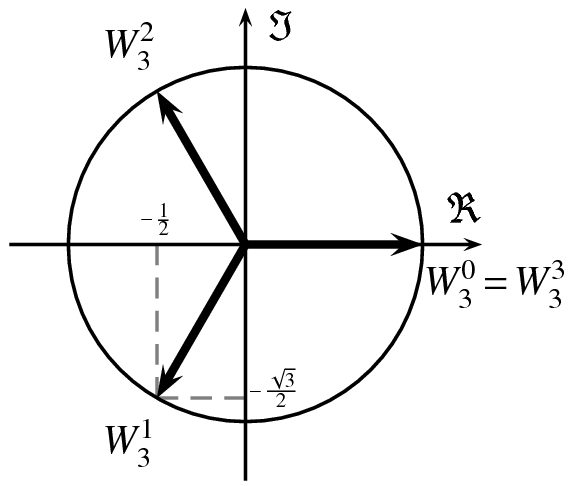Physicist: If you’ve ever had to do square roots you’ve probably come up against the problem of taking the square root of a negative number. If you restrict your attention only to real numbers (0,1, -17, , √2, …, any number you can think of), then there’s no way to take the square root of a negative. But this makes taking square root, cube roots, and so on, a pain.
You have to remember: 1) The square root, forth root, sixth root, … of a positive number has two answers (positive and negative). 2) The square root, forth root, sixth root, … of a negative number has no answers. 3) The cube root, fifth root, seventh root, … of any number has one answer (with the same sign as the original number). These are random, frustrating, difficult-to-remember rules. Mathematicians had to deal with these all the time before the 1700’s.
Then Euler happened. He was looking at a similar problem; finding the roots of polynomials. Similar, because the question “, what is x?”, is exactly the same as “x2+1=0, what is x?”. He was annoyed that most polynomials have roots that don’t exist, so he said; “Sure… But, what if the root did exist. Like… in an imaginary sense…”.
That’s paraphrasing, but it’s pretty accurate. He just declared that there’s a new number called “i” with the property that “i2 = -1″.
So, to actually answer: Complex numbers make it easy to take roots, and using complex numbers, all polynomials with terms up to xN have N roots.

Using only real numbers, the cube root of 1 is 1, and only 1. Using complex numbers you can see that the other two roots exist, they just happen to be off of the real line. In this picture the arrow to the right is "1", and the real line is the horizontal line. The other two arrows are the other two roots. The roots of a number are always equally spaced like this.
These two properties help complex numbers “complete” the real numbers. That is to say; you don’t need to create “super complex numbers” to fix any problems with complex numbers. One of the first “problems” that people ask about is; “Sure, , but what’s
?” Well,
. No problems!
Also, if you’ve ever had to do anything with trigonometry you’ve probably come up against:
Which looks horrible, is horrible, and is horrible to deal with. Here’s the same thing (both equations) using complex numbers:
, which is just a direct application of Euler’s equation:
. Almost any time that you have to do lots of summations or multiplications involving trig function, it’s best to bust out some complex numbers.
In the same vein, electrical engineers use “phasors” (phasor, not phaser) to talk about sinusoidal current (like what comes out of the wall). Again, complex numbers = easy!
If you’ve gotten stuck behind a nasty integral in calculus (and if you haven’t, ignore this), you’ll find that many of them are surprisingly hard using real numbers, but baby simple using complex numbers. For example: (where p and q are polynomials).
Some fields simply can’t be approached without complex numbers, particularly quantum mechanics. In QM the probability of something happening is the square of the magnitude (absolute value) of the “probability amplitude”, which is complex-valued. So, if the probability amplitude is , then the probability is
. There’s really no way around this. In fact, the Schrödinger equation, which is arguably the backbone of QM, has an “i” staring you right in the face. Here’s the equation for a single particle
where is in the first term, and “
” is the probability amplitude of the particle’s location. That’s a bit much, but the point is; you can’t get rid of the complex numbers and do QM with just real numbers.
The moral of the story is that “complex numbers” are misnamed. While they are intimidating at first, they make things simple all over the place. Notably: trigonometry, anything with waves (electricity, light, sound), finding roots, streamlining math (often, but not always), and in quantum mechanics.







Pingback: Q: Can you fix the “1/0 problem” by defining 1/0 as a new number? | Ask a Mathematician / Ask a Physicist
Pingback: Q: What makes natural logarithms natural? What’s so special about the number e? | Ask a Mathematician / Ask a Physicist
Pingback: Q: Quaternions and Octonions: what? | Ask a Mathematician / Ask a Physicist